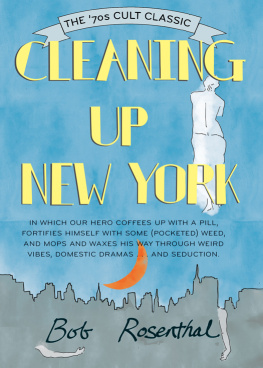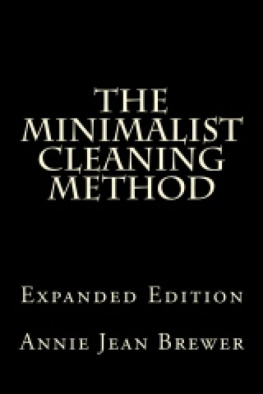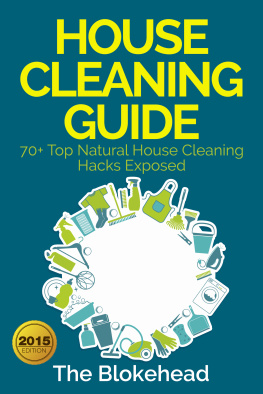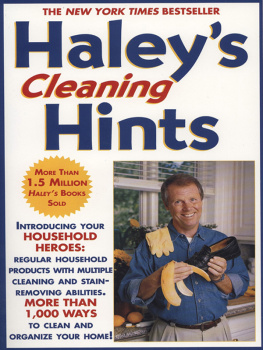
Copyright 1976 Bob Rosenthal
Cover 1976 Rochelle Kraut
Photograph 1976 Maryann Gerarduzzi
Design Katy Homans
Rochelle Kraut
Cover type, color, production Evan Johnston
Originally published in an edition of 750 in 1976 by Angel Hair Books, supported by a grant from the National Endowment for the Arts.
Library of Congress Cataloging-in-Publication Data
Names: Rosenthal, Bob, 1950- author.
Title: Cleaning up New York / by Bob Rosenthal.
Description: New York : Little Bookroom, [2016] | ?1976 | Originally published: Lenox, Mass. : Angel Hair Books, 1976. | Description based on print version record and CIP data provided by publisher; resource not viewed.
Identifiers: LCCN 2015038920 (print) | LCCN 2015038651 (ebook) | ISBN 9781590179901 (epub) | ISBN 9781936941131 (paperback)
Subjects: LCSH: Rosenthal, Bob, 1950- | Poets, American20th centuryBiography. | Cleaning personnelNew York (State)New York Biography. | Cleaning. | New York (N.Y.)Social life and customs 20th century. | BISAC: BIOGRAPHY & AUTOBIOGRAPHY / Personal Memoirs. | HOUSE & HOME / Cleaning & Caretaking.
Classification: LCC PS3568.O8367 (print) | LCC PS3568.O8367 Z46 2016 (ebook) | DDC 818/.5403dc23
LC record available at http://lccn.loc.gov/2015038920
ISBN 978-1-93694-113-1
eBook ISBN: 978-1-59017-990-1
All rights reserved, which includes the right to reproduce this book or portions thereof, including photographs, in any form whatsoever, without written permission of the publisher.
THE LITTLE BOOKROOM
435 Hudson Street, Room 300
New York NY 10014
www.littlebookroom.com
v3.1
Contents
$60. I needed $60 in three weeks time . I was out of a job so the idea of doing temporary work just popped into my head. I called a friend who had once done cleaning jobs and he told me to call up Everything for Living Space. He said Id have to lay out $15 in order to register with the agency. Shelley and I have only been eating rice and beans; I felt I held our future in my hands as I grabbed the checkbook and took the subway up to Broadway and 72nd Street. My trepidation doubled as I stepped into the noisy, broad vacuum created by the large gray buildings that outline Needle Park. My mind thumbed back over pages of Naked Lunch that settled on this location with a green fog. My ears picked up the soundtrack to the movie Panic in Needle Park , which must have been just a microphone hung outside one of these dirty windows. I found the address on 72nd Street and entered the lobby sure that I was about to be jumped as I punched the big, black, knobby button on the elevator. Released into a thin, filthy green, corridor, I pumped my feet up to a frosted-glass door lettered EVERYTHING FOR LIVING SPACE .
Barbara, a flamboyant redhead with a brassy, theatrical voice, became the focus of my attention as the door shut behind me. Her evocative manner of speaking put me at ease and I began to see cleaning as a possible and perhaps glamorous thing to do. Barbara would get me cleaning jobs at $3.50 an hour with a four-hour minimum, after I provided her with two references and the $15 deposit. I gave my former boss and the poet Ron Padgett as references and put down the money. Barbara said she would call me as soon as I was cleared. I walked out, back into the gray fumes of that day. Out of work, nowhere special to go, I shuffled over to Central Park West and started ambling up past noble apartment buildings, awnings, and yawning doormen. I spotted a gold trinket on the sidewalk, picked it up, and held before my eyes a small brass button. I asked a nearby doorman dressed in a green uniform if the button belonged to him. He couldnt speak English, but he understood the question and answered it with a negative. I told him I must have been promoted and he gave me a congratulatory smile. Walking up Central Park West, my stride gained and I straightened up. Passing soldiers of courtesy, imperious apartments overlooking the green domains of the park, I felt my bootstraps pulling; I knew I was on the road to success. I walked into the Museum of Natural History and proffered a quarter for which I received another button. A dinosaur was drawn on it and the word contributor was written below the extinct animal.
Success came the next day in the form of a command from Barbara via the telephone: Go to Interior Design showroom on Lexington Avenue, 59th Street. The first hours passed easily, working with a cheerful middle-aged Jewish wife. I had to move a few objects around the showroom and rehang pottery and macram junk wall-hangings. Later in the afternoon, her husband, the boss, came in. He was the kind of guy who talks fast, is pushy, and cant ever give a direct order. I found myself doing the endless bits and pieces of his undone chores. Each task was a little more tedious and backbreaking than the last. My coordination lessened as the difficulties mounted. I uncrated furniture, changed light bulbs, and tacked up little metal tiles using thumbtacks that would not stick in the wall; and I cleaned out a closet left over from the Fibber McGee and Molly radio show. I consoled myself with the fact that I was getting in plenty of hours. I worked into the evening with no food or rest. I was just about to faint when the miracle occurred. I got paid and set free. I worked and the result was over $20, green and needed, in my pocket. I bought a hamburger and an ale and brought them home. Shelley lifted her tired head off the kitchen table as I came in the door. How bizarre the sizzle of the meat seemed and how delicious seemed the perspiring, green Ballantine Ale! Shelley and I ate the hamburger and drank the ale and said, Pretty good!
The next time I met Ron Padgett, the poet I had used for a reference, he told me of a phone call from a strange lady asking if I was a good housecleaner. At first, Ron thought it was a joke, but when he realized I needed a character reference, he informed Barbara that I was an exceedingly clean person and always brushed my teeth. I made the $60 I needed that month plus enough to register again with the agency. Without thinking twice, I became a fresh recruit in the ranks of the cleaningmen.
CHAPTER 1
The Nature of Cleaning
Clean is an Anglo-Saxon word, which comes into modern pronunciation with little alteration; it means to wash and to make bright. Dirt collects at the intersection between a solid surface and air. Some of the dirt is sitting on top of dirt and is really more in the air than on the counter or floor. This dirt is cleared away and air fills the space just vacated. However, there still remains the dirt that is in direct interaction with the solid surface. This surface must be worked on in such a way as to make it bright. The duality of surface and air is paralleled by a similar duality in cleaning, that of clearing and shining.
In regard to the human body, cleaning is movement or the expenditure of energy. The basic duality of cleaning extends to the mind and the body of the person cleaning. The body does the clearing and the mind does the shining. The mind conceives of cleaning and of cleanliness as a virtue. Cleaning is its own reward for those who dont resent a collaboration with bodily efforts. And for people who like to hire me, a clean house is their reward. The mind must be really shining in order to put the body through what is a vigorous routine.
Cleaning involves the body from its extremities to its center. One is often standing on tiptoes or crouching on them. Fingers are subjected to the almost constant exercise of rubbing. The legs are stretched in deep knee bends and the muscles of the wrist and forearm start to bulge from hard use. The extending of arms works the shoulder muscles and bending over at the waist stretches the dorsal muscles of the legs. The stomach and lower back muscles stretch and contract to buoy up the torso as it leans over, straightens up, and leans over again. Between all of these exercises there is a coordination that turns cleaning into a slow ballet. When the body has learned how to work the cleaning process without conscious instructions, the mind can go slightly blank, just giving off a little shine. The body will go on with grace and unconscious artistry.
Next page









